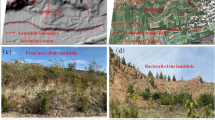Abstract
In this paper, the impact of the viaduct on flow and traffic exhausting particles dispersion within urban street canyons was numerically simulated using a computational fluid dynamics (CFD) model. Two-dimensional flow and dispersion of particles from traffic exhausts were modeled using the standard k-∈ turbulence model. The street canyons with a viaduct at different widths and different heights above the ground are simulated. The results show that the airflow in street canyon is evidently influenced by the viaduct: The position of the main vortex center is changed, especially there are two strong vortexes when the viaduct is placed at 10 m height above the ground. It is found based on the study of the particles number concentrations (PNCs) that the viaduct may mitigate the pollution level in the street canyon sometimes. The impact of the viaduct width on PNCs is stronger than that of the height. The study of PNDs reveals that the mean PNCs at the wall of upwind building increase when a viaduct is placed in street canyon. In addition, it is found based on the study of mean particles residence time (PRT) that the removal of the particles strongly correlates to the mean PNCs. The results indicate that the viaduct is an important factor to influence the flow patterns and particles dispersion in street canyons.
Similar content being viewed by others
References
Dockery D, Pope C. Acute respiratory effects of particulate air pollution. Annu Rev Publ Health, 1994, 15(1): 107–132
Anderson K, Avol E, Edwards S, et al. Controlled exposures of volunteers to respirable carbon and sulfuric acid aerosols. J Air Waste Manage, 1992, 42(6): 770–776
Schwartz J, Dockery D, Neas L. Is daily mortality associated specifically with fine particles? J Air Waste Manage, 1996, 46(10): 927–939
Harrison R, Yin J. Particulate matter in the atmosphere: Which particle properties are important for its effects on health? Sci Total Environ, 2000, 249(1–3): 85–101
Brugge D, Durant J, Rioux C. Near-highway pollutants in motor vehicle exhaust: A review of epidemiologic evidence of cardiac and pulmonary health risks. Environ Health, 2007, 6(1): 23
Pope Iii C, Dockery D. Health effects of fine particulate air pollution: Lines that connect. J Air Waste Manage, 2006, 56(6): 709–742
Leitl B, Meroney R. Car exhaust dispersion in a street canyon. Numerical critique of a wind tunnel experiment. J Wind Eng Ind Aerod, 1997, 67: 293–304
Xie X, Huang Z, Wang J. Impact of building configuration on air quality in street canyon. Atmos Environ, 2005, 39(25): 4519–4530
Neofytou P, Venetsanos A, Rafailidis S, et al. Numerical investigation of the pollution dispersion in an urban street canyon. Environ Modell Softw, 2006, 21(4): 525–531
Garcia Sagrado A P, Van Beeck J, Rambaud P, et al. Numerical and experimental modelling of pollutant dispersion in a street canyon. J Wind Eng Ind Aerod, 2002, 90(4–5): 321–339
Yassin M, Kellnerova R, Janour Z. Impact of street intersections on air quality in an urban environment. Atmos Environ, 2008, 42(20): 4948–4963
Kumar P, Garmory A, Ketzel M, et al. Comparative study of measured and modelled number concentrations of nanoparticles in an urban street canyon. Atmos Environ, 2009, 43(4): 949–958
Gromke C, Ruck B. Influence of trees on the dispersion of pollutants in an urban street canyon — experimental investigation of the flow and concentration field. Atmos Environ, 2007, 41(16): 3287–3302
Gromke C, Buccolieri R, Di Sabatino S, et al. Dispersion study in a street canyon with tree planting by means of wind tunnel and numerical investigations — evaluation of cfd data with experimental data. Atmos Environ, 2008, 42(37): 8640–8650
Gu Z L, Zhang Y W, Lei K B. Large eddy simulation of flow in a street canyon with tree planting under various atmospheric instability conditions. Sci China Tech Sci, 2010, 53(7): 1928–1937
Ahmadi G, Li A. Computer simulation of particle transport and deposition near a small isolated building. J Wind Eng Ind Aerod, 2000, 84(1): 23–46
Santiago J, Martin F. Slp-2d: A new Lagrangian particle model to simulate pollutant dispersion in street canyons. Atmos Environ, 2008, 42(17): 3927–3936
Huang Y, Hu X, Zeng N. Impact of wedge-shaped roofs on airflow and pollutant dispersion inside urban street canyons. Build Environ, 2009, 44(12): 2335–2347
Xie X, Huang Z, Wang J, et al. The impact of solar radiation and street layout on pollutant dispersion in street canyon. Build Environ, 2005, 40(2): 201–212
Memon R A, Leung D Y C, Liu C H. Effects of building aspect ratio and wind speed on air temperatures in urban-like street canyons. Build Environ, 2010, 45(1): 176–188
Xie X, Liu C H, Leung D Y C, et al. Characteristics of air exchange in a street canyon with ground heating. Atmos Environ, 2006, 40(33): 6396–6409
Kondo H, Tomizuka T. A numerical experiment of roadside diffusion under traffic-produced flow and turbulence. Atmos Environ, 2009, 43(27): 4137–4147
Launder B, Spalding D. The numerical computation of turbulent flows. Comput Method Appl M, 1974, 3(2): 269–289
Oke T. Street design and urban canopy layer climate. Energ Buildings, 1988, 11(1–3): 103–113
Kumar P, Fennell P, Langley D, et al. Pseudo-simultaneous measurements for the vertical variation of coarse, fine and ultrafine particles in an urban street canyon. Atmos Environ, 2008, 42(18): 4304–4319
Kumar P, Fennell P, Britter R. Measurements of particles in the 5–1000 nm range close to road level in an urban street canyon. Sci Total Environ, 2008, 390(2–3): 437–447
Green N, Etheridge D, Riffat S. Location of air intakes to avoid contamination of indoor air: A wind tunnel investigation. Build Environ, 2001, 36(1): 1–14
Chang T. Numerical evaluation of the effect of traffic pollution on indoor air quality of a naturally ventilated building. J Air Waste Manage, 2002, 52(9): 1043–1053
Author information
Authors and Affiliations
Corresponding author
Rights and permissions
About this article
Cite this article
Zhang, C., Wen, M., Zeng, J. et al. Modeling the impact of the viaduct on particles dispersion from vehicle exhaust in street canyons. Sci. China Technol. Sci. 55, 48–55 (2012). https://doi.org/10.1007/s11431-011-4610-y
Received:
Accepted:
Published:
Issue Date:
DOI: https://doi.org/10.1007/s11431-011-4610-y




